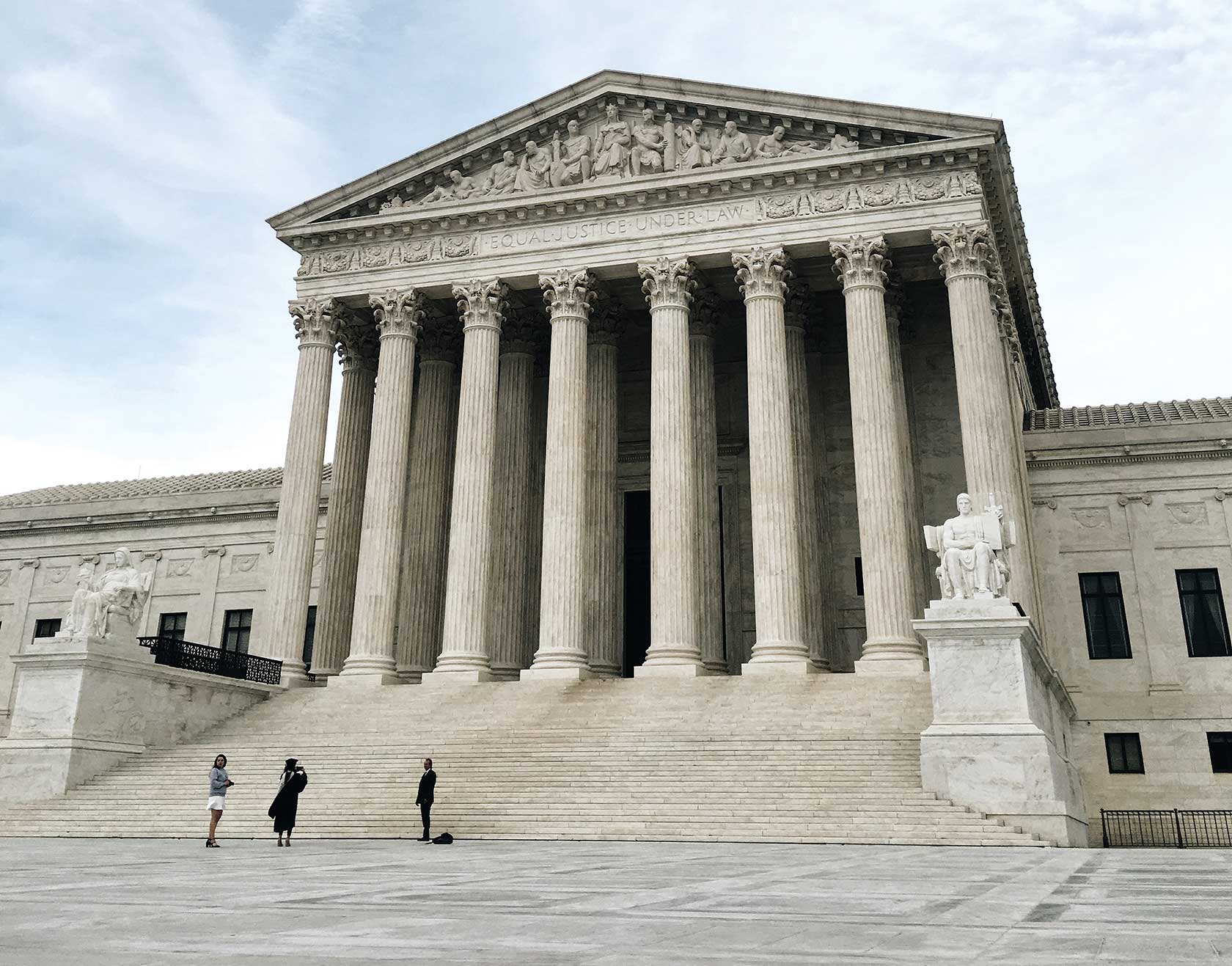The Supreme Court ruling on positive discrimination – one year later

Last year, the U.S. Supreme Court struck down affirmative action in a landmark ruling, effectively ending college admissions based on race, but the law, which was originally intended to target colleges, may have affected other industries as well.
Some experts say the decision has had ripple effects beyond higher education since June 2023. The full extent of the ruling’s impact is yet to be seen.
When the court announced its decision, Michael Kippins, a litigator with Lawyers for Civil Rights, and other members of his organization were concerned about the impact the decision would have on the “racial climate on campus” and admissions rates for students of color. Equally worrying were the potential impacts outside of academia.
While the Supreme Court’s decision was aimed at universities, Kippins said some parties have overstepped the boundaries, including opposing targeted equal opportunities for people of color in companies.
“We’ve seen some objections from conservative groups who wanted to push the agenda beyond the Supreme Court decision … and we’ve seen objections in the areas of employment, government procurement and the financing and lending areas,” he said.
Carla Reeves, a principal at the law firm Goulston & Storrs and an employment litigator, said she has seen people over the past year connect the Supreme Court decision to DEI initiatives in the private sector.
“We saw immediately that people were making these connections and trying to leverage this decision for higher education in a way that has very real, immediate impacts on the workforce,” she said. “And I think those impacts were a chilling effect for some.”
Reeves pointed to a case against Fearless Fund, a venture capital firm that invests in companies owned by women of color, and said that the case mentioned the affirmative action case. In June, an appeals court ruled that a scholarship program offered by the firm to black women was discriminatory. The plaintiff in the case, the American Alliance for Equal Rights, is led by conservative activist Edward Blum, who spearheaded the case against affirmative action.
“They are looking for ways to undo the efforts that have been made over time,” Reeves said, adding that workplaces in various industries are reviewing their internal DEI practices and discussing how to proceed.
There is a “legally compliant way” to maintain DEI practices, Reeves said, and the decision should not deter employers from continuing the efforts they have invested time and money in. She said she sees an opportunity for employers to reflect on their priorities and use the tools available to uphold their values.
“This decision was a reminder that we need to remain vigilant and also be very creative and thoughtful… I don’t think stopping support for these efforts… is the solution here,” she said.
Shayla Mombeleur, secretary of the Massachusetts Bar Association and a litigator at Todd & Weld, expressed a similar sentiment.
“We’re still in a phase where we’re watching and learning,” she said of the impact the ruling could have in the long run, but “the most important thing, in my view, is for people to continue to stand firm in their DEI practices while, of course, keeping an eye on the legal landscape.”
Mombeleur, who co-chairs her firm’s DEI committee, said she sees the Supreme Court’s decision as a reversal of the work that equal opportunity advocates have done in academia and the workforce, much of which has focused on removing barriers for people of color.
She praised schools that released statements in response to the Supreme Court decision reaffirming their stance on DEI and aligning the changes required by the law with their internal values.
Like Kippins and Reeves, Mombeleur expressed concern that the decision would have far-reaching consequences. However, it is unclear whether these initial fears will prove to be true.
Following the ruling, school officials grappled with how they could “express the value of diversity and inclusion” on campus while complying with the law, said Harvey Young, dean of Boston University’s College of Fine Arts.
“The conversation really revolved around the question, ‘How do we express our commitment to inclusion and access and to bringing people from different walks of life and different experiences together in spaces to have conversations and dialogues?'” he said.
In his leadership role, he specifically emphasized that students would be accepted into the program based on their academic merit and underscored his college’s commitment to a “diversity of ideas and experiences.”
There is a claim that people of color who benefited from affirmative action were accepted into positions they were not qualified for, he said, when in reality accepted students have historically been “exceptional.” He fears that without the legal stamp of affirmative action, not all institutions will continue to make efforts to promote a diverse student body.
“You can easily remove a box from an application,” Young said, referring to the change required by law. “But the real proof of whether or not you’re engaged as an institution is not who you admit … but ‘What message are you sending to the world?'”
Here in Boston, Northeastern University and Boston College were among the group of institutions that responded to the Supreme Court ruling with statements declaring their commitment to diversity.
Looking ahead, Kippins, a litigation expert at Lawyers for Civil Rights, said a similar pattern will continue.
“We’re going to see that colleges that are very committed, inspired and thoughtful about attracting and retaining applicants and students of color will continue to do so. They’re going to make an effort,” he said, adding that higher education plays a key role in creating opportunities for historically marginalized groups.
A recent report from Common App, a higher education nonprofit, shows an increase in the number of students of color applying to four-year colleges since June 2023. The report does not provide enrollment numbers.
Because the Supreme Court’s ruling is only a year old, Kippins said, it continues to give rise to differing interpretations that could have implications beyond colleges and universities.
“There are boundaries that need to be set and redefined,” he said, “and we will likely face the same challenges outside the university context that we have already experienced.”



